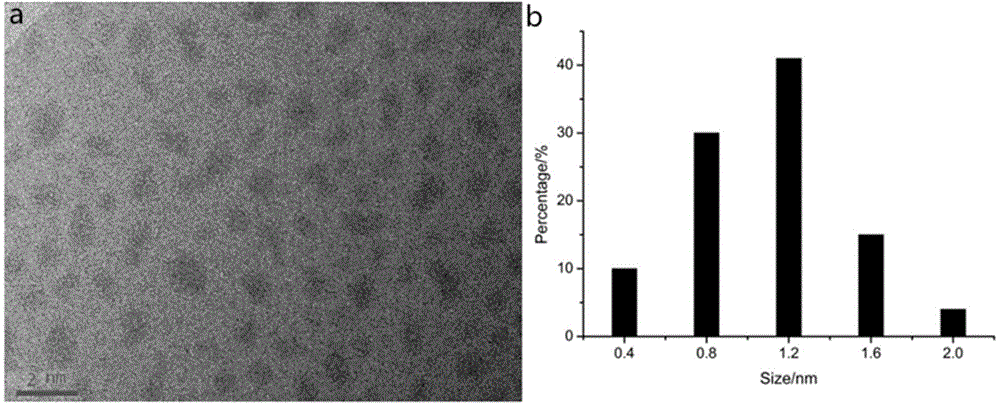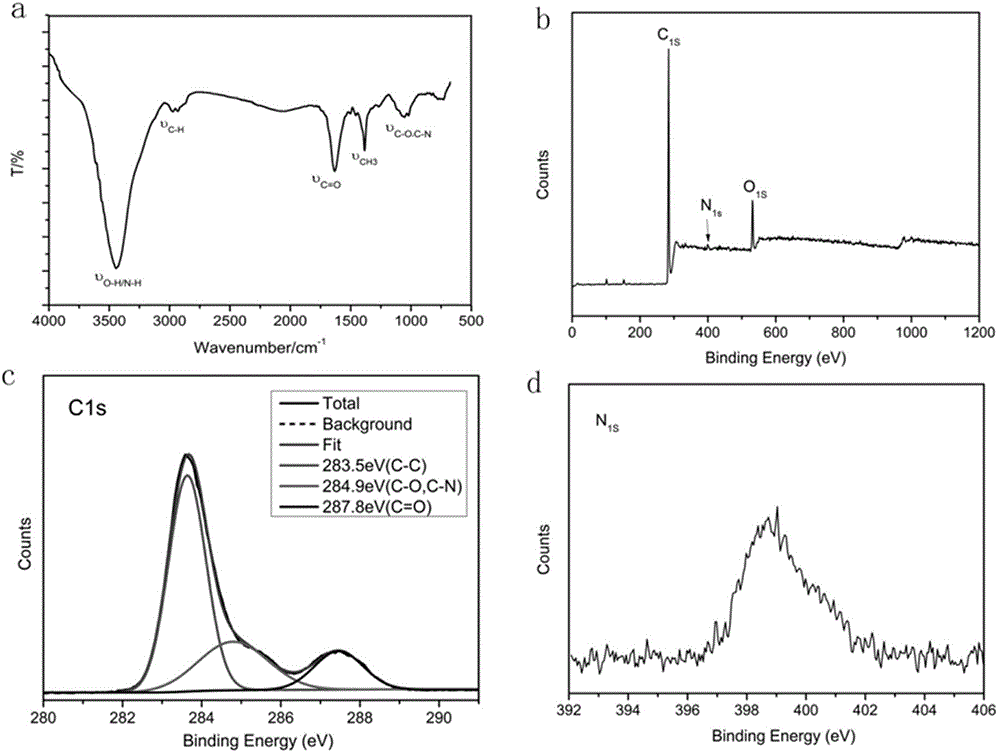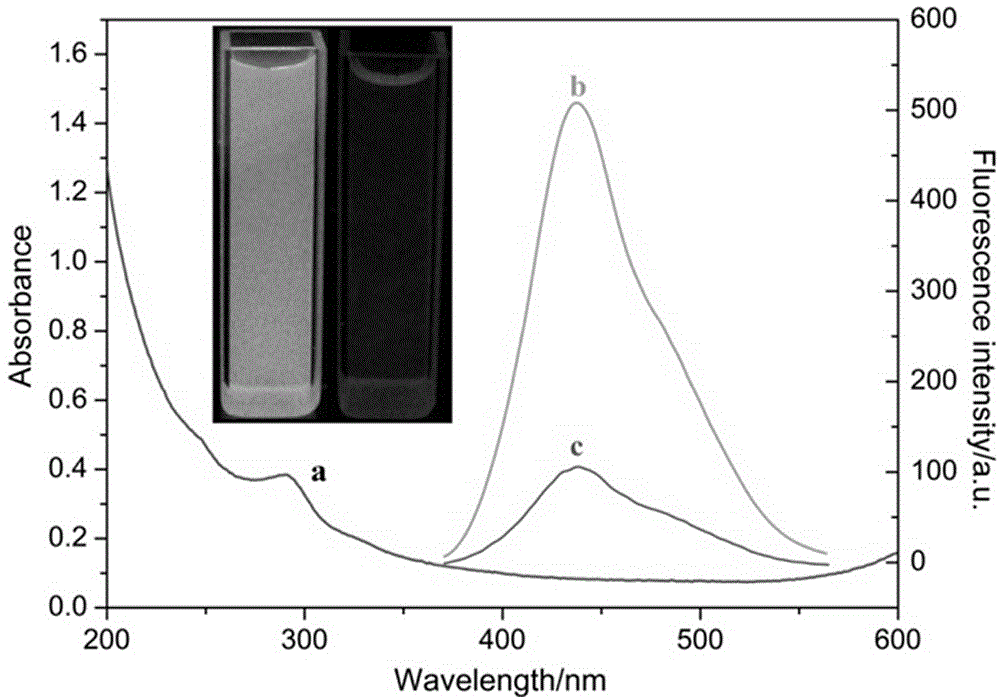Preparation and application of fluorescent carbon dot nanoprobe for detecting methylene blue and living cell imaging
A methylene blue and nano-probe technology, applied in the field of biochemical analysis, can solve the problems of strict reaction conditions, expensive and difficult to obtain raw materials, complicated process, etc., and achieve the effects of wide linear response range, stable imaging, and simple preparation
- Summary
- Abstract
- Description
- Claims
- Application Information
AI Technical Summary
Problems solved by technology
Method used
Image
Examples
Embodiment 1
[0031] Preparation of fluorescent nanomaterial CDs
[0032] Fluorescent nanomaterial carbon dots (CDs) were prepared by pyrolyzing lychee kernels, as follows: weigh 5.0 g of lychee kernels in a crucible, heat them to 300 °C in a muffle furnace, take them out after 2 hours, and grind them with a mortar. Then add 20 mL of ultrapure water, sonicate for 30 min, filter, centrifuge at 10,000 rpm for 10 min, and store the supernatant at 4°C in the dark.
Embodiment 2
[0034] Utilize methylene blue to measure the quenching action of CDs fluorescent probe in the determination of methylene blue in water, specifically:
[0035] In the PB buffer solution with pH=8.0, in the presence of 50 μmol / L methylene blue solution, methylene blue has a very fast response to CDs. At the excitation wavelength of 320 nm, the fluorescence of CDs is quickly quenched. When , the fluorescence is quenched by about 80% ( image 3 ), and the fluorescence remained essentially unchanged in the ensuing 1 hour. The results indicated that methylene blue quenched the fluorescence of CDs very much and quickly, implying that the fluorescent probe was fast and stable. The fluorescent probe detects methylene blue with a detection limit as low as 0.05 μmol / L, and a linear response range: 0.8-10 μmol / L ( R 2 = 0.9930) ( Figure 4 ).
Embodiment 3
[0037] Application of CDs Fluorescent Probes in Live Cell Imaging
[0038] Add 80 μg / ml of the fluorescent CDs to a cell culture dish and incubate with living cells for 24 hours, wash the cells with PBS to remove CDs that have not entered the cells, and observe with a laser confocal microscope system. Under excitation at 405 nm, the cells continue to emit blue color fluorescence.
PUM
 Login to View More
Login to View More Abstract
Description
Claims
Application Information
 Login to View More
Login to View More - R&D
- Intellectual Property
- Life Sciences
- Materials
- Tech Scout
- Unparalleled Data Quality
- Higher Quality Content
- 60% Fewer Hallucinations
Browse by: Latest US Patents, China's latest patents, Technical Efficacy Thesaurus, Application Domain, Technology Topic, Popular Technical Reports.
© 2025 PatSnap. All rights reserved.Legal|Privacy policy|Modern Slavery Act Transparency Statement|Sitemap|About US| Contact US: help@patsnap.com



